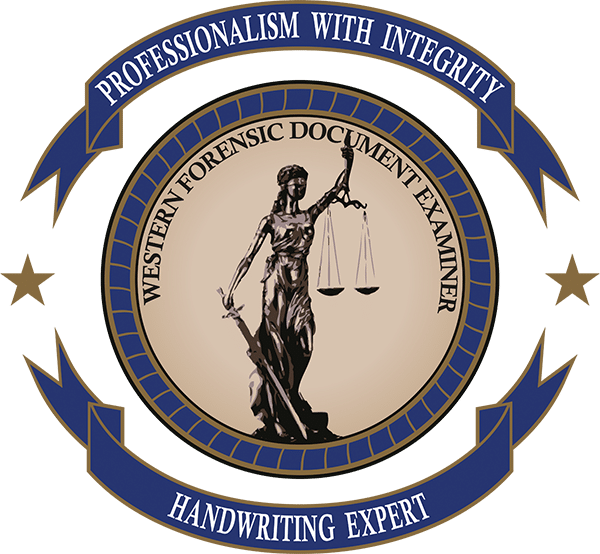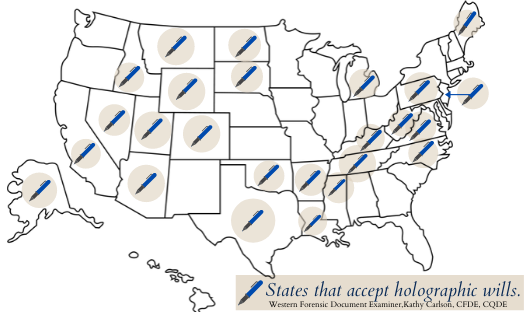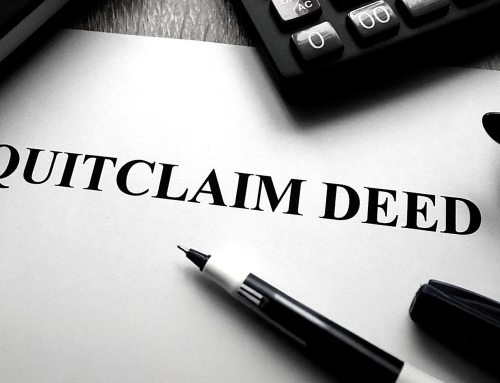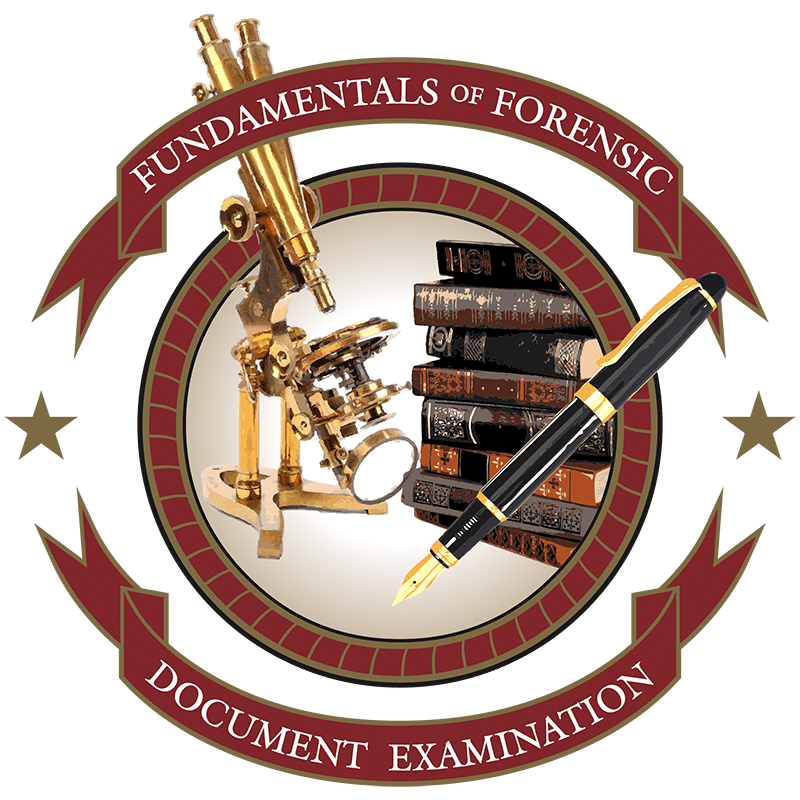While holographic wills are legal in many states in the west, handwritten wills can throw a wrench into even the best laid plans.
Holographic Wills
What is a holographic will? Holographic wills, or also known as handwritten testaments, are wills that are created and signed by the testator. Please note: Holographic wills must be handwritten and signed by the testator.
In most cases, the creation of a holographic will should be signed by the testator and witnessed. However, it doesn’t always have to be witnessed; that’s where people contest. More often than not, you’ll find that people don’t believe it was the testator’s own handwriting. Hence, needing a Forensic Document Examiner.
Law Lingo: Testator is generally referred to a male will maker, while testatrix is a female will maker.
Where are holographic testaments accepted? Holographic wills are valid if made in one of the following states:
- Alaska
In some states, the pen is truly mightier than the sword.
- Arizona
- Arkansas
- California
- Colorado
- Idaho
- Kentucky
- Louisiana
- Maine
- Michigan
- Mississippi
- Montana
- Nebraska
- Nevada
- New Jersey
- North Carolina
- North Dakota
- Oklahoma
- Pennsylvania
- South Dakota
- Tennessee
- Texas
- Utah
- Virginia
- West Virginia
- Wyoming
Each state has different laws regarding holographic wills. The states in which I conduct the most business is highlighted in navy. Please remember: Certain requirements vary from state-to-state.
Document Examination Services

If a holographic will is contested, a forensic document examiner may be needed.
When a holographic testament is not witnessed, certain services may be required to obtain authenticity. The document will go through a probate process, a process that takes place after someone passes. During this procedure, a Forensic Document Examiner may be needed analyze the document.
Law Lingo: Probate is the judicial process where a will is “proved valid” in a court of law. Consequently, it is widely accepted that the document is the true last testament of the deceased.
For example, there must be evidence that the testator created the will. This is a detail a Forensic Document Examiner could provide. Moreover, other testimonies must show that the author had the mental capacity to write the will. Unless there is evidence to show otherwise, the author of the testament will be considered competent. Finally, in order for the holographic will to be lawful, the author must clearly state who will be the beneficiary to his or hers estate.
Time is of the Essence
Knowing that handwritten wills can be debated, why write one? The most common scenario for a person to create a holographic will is when he or she is in imminent danger. For example, situations include soldiers on a battlefield, or a person in a severe accident who doesn’t expect to survive.

The ideal method is to have a typed will that is signed by the testator and two witnesses.
Here is my favorite example of such a scenario: In 1948, a Saskatchewan Canadian named Cecil George Harris became trapped under his tractor. In desperation, he carved his last testament into the side of his tractor fender. It read, “In case I die in this mess, I leave all to the wife. Cecil Geo. Harris.” The fender was removed from the tractor and was debated over in a court of law. Luckily, his wife received his estate. If you’re planning a road trip to Canada anytime soon, you can still see the fender at the University of Saskatchewan College of Law.
Finally, if you have the option to plan ahead, do it. The ideal way to plan your estate is to type your last testament, and have it signed by you and two witnesses. However, if advanced planning is not an option for you, a holographic testament is the next best thing.
Have you, or someone you know, come across a holographic will? I can help you authenticate the testator, or testatrix. As a forensic document examiner, I can offer many professional services that can be of help to you and your situation. Contact me with any questions and learn more about fees and the services I offer.






